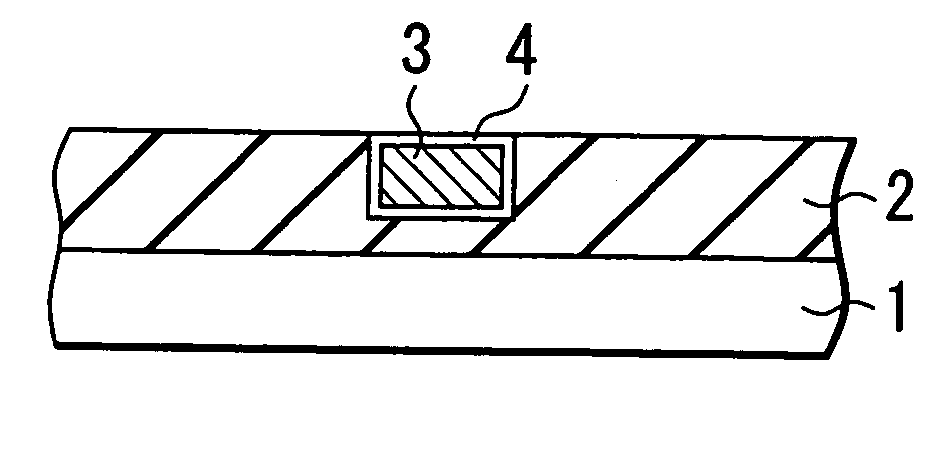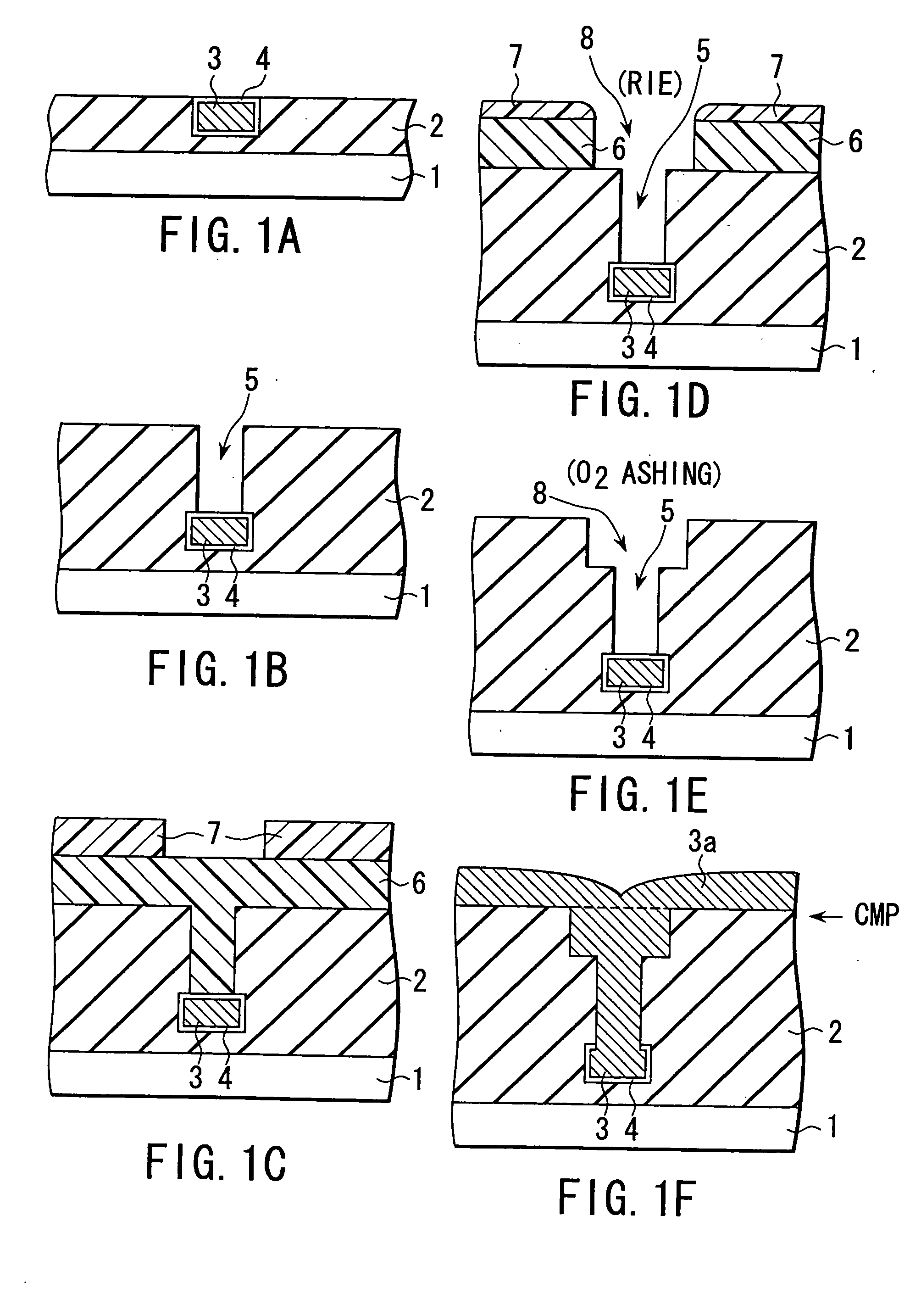Semiconductor device and manufacturing method of the same
a semiconductor and manufacturing method technology, applied in semiconductor devices, semiconductor/solid-state device details, electrical devices, etc., can solve the problems of uneven deformation of the opening portion of the resist, the inability to easily perform selective etching of the silicon nitride film using the resist as a mask, and the inability to raise the selective ratio between the resist and the silicon nitride film
- Summary
- Abstract
- Description
- Claims
- Application Information
AI Technical Summary
Problems solved by technology
Method used
Image
Examples
tenth embodiment
[0223] Referring to FIGS. 12A and 12B, a tenth embodiment of the present invention will now be described. The tenth embodiment is different from the eighth embodiment in that the anti-reflective film constituted by the polysilane 6 is made to be a portion of the insulating film 2 after the contact hole 5 has been formed.
[0224] As shown in FIG. 12A, a thick insulating film 2 is directly formed on the silicon substrate 1. Then, the anti-reflective film constituted by the polysilane 6 is applied. Then, the pattern of the resist 7 having an opening portion of the contact hole is formed on the anti-reflective film.
[0225] The resist 7 is used as the etching mask to perform anisotropic RIE to open the contact hole 5 that reaches the surface of the silicon substrate 1. Then, as shown in FIG. 12B, O2 ashing is performed to remove the resist 7. Simultaneously, the polysilane 6 is changed to the silicon oxide film. Thus, the anti-reflective film can be formed to be a portion of the insulatin...
eleventh embodiment
[0229] Referring to FIGS. 13A to 13C, an eleventh embodiment of the present invention will now be described. As shown in FIG. 13A, the thick insulating film 2 is formed on the silicon substrate 1. Then, an anti-reflective film constituted by the polysilane 6 is applied. Then, the pattern of the resist 7 having the opening portion of the contact hole is formed. Then, the resist 7 is used as a mask when the anisotropic RIE is performed to open the polysilane 6. Then, as shown in FIG. 13B, N2 ashing is performed to remove the resist 7. Simultaneously, the polysilane 6 is changed to the silicon nitride film.
[0230] Then, as shown in FIG. 13C, the silicon nitride film 4 is used as the mask when the anisotropic RIE is performed to form the contact hole having a high aspect ratio which reaches the silicon substrate 1.
[0231] When a resist mask is directly used to form the contact hole having the high aspect ratio by the anisotropic RIE, the film thinning of the resist mask occurs. On the o...
twelfth embodiment
[0233] Referring to FIGS. 14A to 14C, a twelfth embodiment of the present invention will now be described. As shown in FIG. 14A, the insulating film 2 constituted by the thick silicon oxide film is formed on the silicon substrate 1. Then, the anti-reflective film constituted by the polysilane 6 is applied to the surface of the insulating film 2. The resist 7 is used to form a reversed pattern of the resist 7 such that the opening portion of the contact hole is covered. Then, RIE using N2 is performed to change the exposed surface of the silicon nitride film 4, and then the resist 7 is removed.
[0234] Then, as shown in FIG. 14B, the silicon nitride film 4 is used as a mask to perform the anisotropic RIE to open the contact hole, which reaches the silicon substrate 1, in the insulating film 2 constituted by the polysilane 6 and the silicon oxide film.
[0235] Then, a treatment similar to the O2 ashing step is performed to change the polysilane 6 to the silicon oxide film. Thus, the pol...
PUM
 Login to View More
Login to View More Abstract
Description
Claims
Application Information
 Login to View More
Login to View More - R&D
- Intellectual Property
- Life Sciences
- Materials
- Tech Scout
- Unparalleled Data Quality
- Higher Quality Content
- 60% Fewer Hallucinations
Browse by: Latest US Patents, China's latest patents, Technical Efficacy Thesaurus, Application Domain, Technology Topic, Popular Technical Reports.
© 2025 PatSnap. All rights reserved.Legal|Privacy policy|Modern Slavery Act Transparency Statement|Sitemap|About US| Contact US: help@patsnap.com



